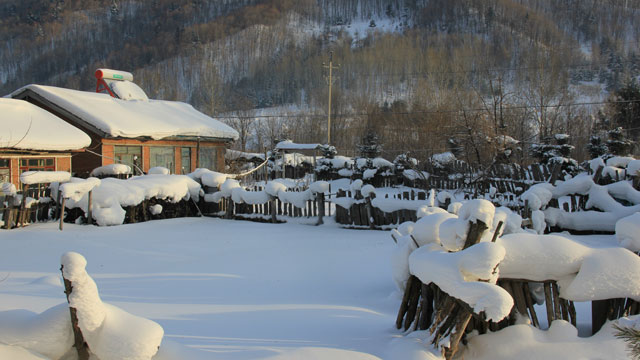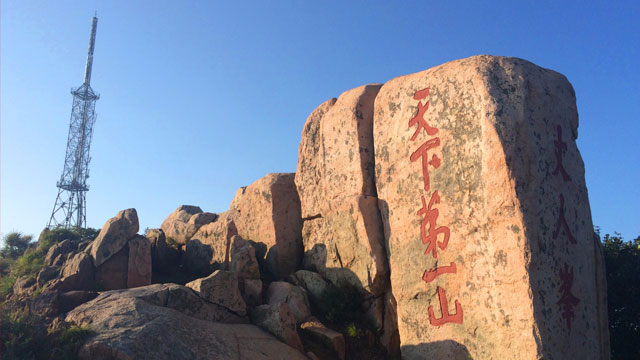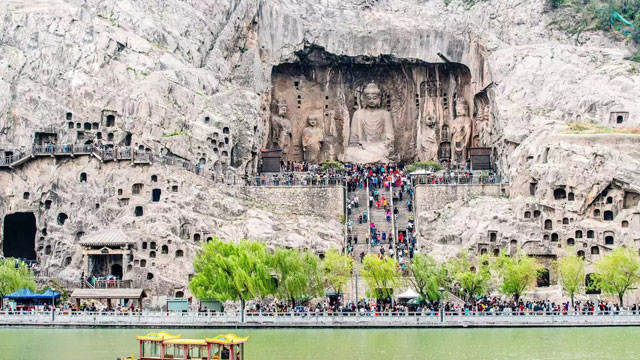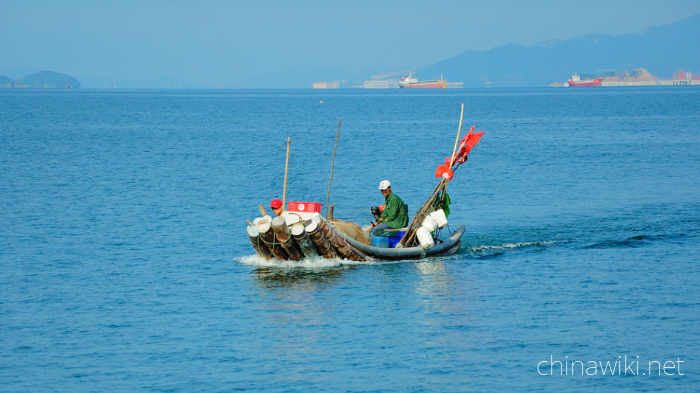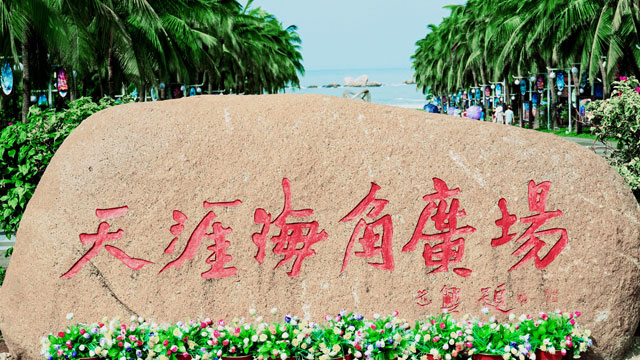Hebei
Hebei Province, referred to as "Ji", is a provincial administrative region of the people's Republic of China and the capital of Shijiazhuang. Located in North China, it borders between 36 ° 05 ′ - 42 ° 40 ′ N and 113 ° 27 ′ - 119 ° 50 ′ e, encircling Beijing, Tianjin in the East and Bohai Sea, Shandong and Henan in the southeast and south, Taihang Mountain in the West and Shanxi, Inner Mongolia in the northwest and North, Liaoning in the northeast, with a total area of 188800 square kilometers.
Hebei Province is located in the North China Plain, bordering Bohai Sea in the East, Beijing and Tianjin in the inner ring, Taihang Mountain in the west, Yanshan Mountain in the north, and Zhangbei plateau in the north of Yanshan mountain. It is the only province with plateau, mountain, hill, plain, lake and seashore in China. It straddles Haihe River and Luanhe River. Hebei Province is located in the temperate continental monsoon climate; located in the coastal open area, is the eastern zone of China's economic development from east to West echelon, is an important grain and cotton producing area in China. In April 2017, the CPC Central Committee and the State Council decided to establish xiong'an New Area in Hebei Province. In August 2019, the State Council established a new China (Hebei) pilot free trade zone.
By the end of 2018, Hebei Province has 11 prefecture level cities, including 47 municipal districts, 20 county-level cities, 94 counties and 6 autonomous counties, with a permanent resident population of 75.563 million. In 2018, the GDP of Hebei Province reached 3601.03 billion yuan, an increase of 6.6% over the previous year. Among them, the added value of the primary industry was 333.8 billion yuan, an increase of 3.0%; the added value of the secondary industry was 1604.01 billion yuan, an increase of 4.3%; the added value of the tertiary industry was 1663.22 billion yuan, an increase of 9.8%.
Historical evolution
Hebei was called Jizhou in ancient times. Shun was divided into 12 states, and Hebei was called Youzhou. Yugong is also known as Jizhou. Zhou Li Zhi Fang is called Youzhou.
In the 15th century BC, Zuyi, the king of Shang Dynasty, moved his capital to Xing (now Xingtai City). After Zuyi, Zuxin, wojia, Zuding and Nangeng, he moved to Nangeng for more than 130 years.
In the 11th century BC, King Wu of Zhou granted the son of Duke Zhao to the state of Yan and the son of Duke Zhou to the state of Xing. Hebei became the land of Yan and Xing.
During the spring and Autumn period, the northern part of Hebei Province belonged to Yan state, the southern part belonged to Zhongshan state, Zhao state and Wei state, and the northwest part belonged to Dai state. Handan and Xingtai used to be the capitals of Zhao state.
At the time of Qin Shihuang, it belonged to Julu County, Handan County, Hengshan County, Qi County, Jibei County, Shanggu County, Daijun County, Yuyang county and youbeiping county.
In the Western Han Dynasty, Hebei was a small part of Youzhou, Jizhou and Bingzhou. Youzhou governed Jizhou (now Beijing), Jizhou governed Guangchuan (now the old city of Jizhou in Hebei), and Bingzhou governed Jinyang (now Taiyuan in Shanxi). In the Eastern Han Dynasty, it belonged to Youzhou and Jizhou. The Three Kingdoms belonged to Youzhou and Jizhou.
In the Western Jin Dynasty, it was part of Youzhou, Jizhou and Sizhou. Youzhou governed Zhuozhou (today's Beijing City) and Jizhi house (today's Gaoyi County, Shijiazhuang City). During the Sixteen Kingdoms period of the Eastern Jin Dynasty, it was successively occupied by the later Zhao, the former Yan, the former Qin, the later Qin, the Western Yan, the northern Yan and the Southern Yan. The northern and Southern dynasties belong to the Northern Wei Dynasty, the Eastern Wei Dynasty, the Northern Qi Dynasty and the Northern Zhou Dynasty.
In the Sui Dynasty, it belonged to Jizhou. It governs Wuyang county (Daming), Qinghe County (Qinghe), Wu'an county (Yongnian), Hengshan County (Zhengding), Hejian county (Hejian), Shanggu county (Yi County), Beiping county (Lulong), Xindu county (Ji county), Xiangguo county (Xingtai), Zhao county (Zhao county), Boling county (Dingzhou), etc.
In the Tang Dynasty, it was a small part of Hebei Road and Hedong Road, including Fanyang county (Beijing), Jingcheng county (Cang County), Xindu county (Jizhou), Hejian county (Hejian), Boling county (Dingzhou), Julu County (Xingtai), Wen'an County (Renqiu), Shanggu county (Yi County), Raoyang County (Shenzhou) and Guichuan county (huaizhou) Weijun (Daming), Hengzhou Changshan (Zhengding), beizhou Qinghe (Qinghe), Mingzhou Guangping (Yongnian), Pingzhou Beiping (Lulong), Zhaozhou Zhaojun (Zhaoxian), Hedong Weizhou Anbian (Yuxian).
In the Late Jin Dynasty, Shi Jingtang cut sixteen states of Yanyun and gave them to Qidan and Liao. Zhou Shizong restored the three passes, and Qidan was bounded by Baigou river.
In the Northern Song Dynasty, the southern part belonged to Hebei East Road and Hebei West Road. In the north, it belongs to Nanjing Road, the east of Xijing road and the west of Zhongjing Road in Liao state; in the east of Hebei Road, it governs Daming mansion, Kaide mansion and Hejian mansion; in the eleven states, Cang, Ji, Bo, Di, Mo, Xiong, Ba, De, bin, en and Qing; in the west of Hebei Road, it governs Zhending mansion (Zhengding), Zhongshan mansion (Dingzhou), Xinde mansion (Xingtai) and Qingyuan mansion (Zhaoxian). Zhou Jiu: Xiang, Jun, Huai, Wei, Ming, Shen, CI, Qi, Bao.
In Jin Dynasty, it belonged to Hebei East Road and Hebei West Road. Wanyanliang set up his capital in Yan (now Beijing) and changed it to Zhongdu road.
Mongolia, the first home Yanjing road. In the fourth year of the Zhiyuan Dynasty, the capital was set in Beijing. Dadu road was changed and Zhongshu province was established. Hebei Province was directly under the central government in Yuan Dynasty. Hebei has jurisdiction over Baoding Road (Qingyuan), Zhending Road (Zhengding), Shunde Road (Xingtai), Guangping Road (Yongnian), Daming Road (Daming), Hejian Road (Hejian), Yongping Road (Lulong), Dadu Road (Beijing), south of Shangdu Road, south of Xinghe Road, Daning Road, etc.
The Ming Dynasty belonged to beizhili, a small part of Shanxi and a small part of Tatar. It was still directly under the central government, and Tianjin began to set up counties. Beizhili governs shuntianfu (Daxing, Wanping), Yongping Fu (Lulong), Daming Fu (Daming), Shunde Fu (Xingtai), Guangping Fu (Yongnian), Baoding Fu (Qingyuan), Zhending Fu (Zhengding), Hejian Fu (Hejian), Xuanhua Fu (Xuanhua), etc.
In the Qing Dynasty, it belonged to Zhili Province and governed shuntianfu (Daxing, Wanping), shundefu (Xingtai), guangpingfu (Yongnian), baodingfu (Qingyuan), zhengdingfu (Zhengding), tianjinfu (Tianjin), hejianfu (Hejian), chengdefu (Chengde), damingfu (Daming), yongpingfu (Lulong), Xuanhua Fu (Xuanhua), etc. The capital of Zhili Province is in Baoding. Since the eighth year of Yongzheng reign, the governor of Zhili has been stationed in Baoding prefecture (now Baoding City). There is now the governor's office of Zhili at that time.
After the founding of the Republic of China, Nanjing was the capital of the national government at that time. Today, Hebei Province mainly belongs to Zhili Province. Later, because the name of Zhili Province does not conform to the reality, it was located to the north of the Yellow River and changed to Hebei Province in 1928.
In November 1930, the capital of Hebei Province moved to Tianjin. In June 1935, the capital of Hebei Province moved to Baoding.
In 1949, after the founding of the people's Republic of China, it was still Hebei Province.
In 1952, Chahar province was abolished and its former Chanan and Chabei special areas were assigned to Hebei Province.
In 1956, Rehe province was abolished and most of its original jurisdiction was transferred to Hebei Province.
In 1958, Shunyi, Yanqing, Pinggu, Tongxian, Fangshan, Miyun, Huairou and Daxing counties in Hebei Province were included in Beijing.
In February 1958, Tianjin was transferred to Hebei Province, and in January 1967, Tianjin was restored to be a municipality directly under the central government.
In 1968, during the cultural revolution, the capital of Hebei Province moved from Baoding to Shijiazhuang.
In 1973, Jixian County, Baodi County, Wuqing County, Jinghai County and Ninghe County in Hebei Province were included in Tianjin city. Since then, the current jurisdiction scale of Hebei Province has been formed.
On April 1, 2017, the CPC Central Committee and the State Council issued a notice and decided to establish xiong'an New Area in Hebei Province.
administrative division
By the end of 2019, Hebei Province has jurisdiction over 11 prefecture level cities, including Shijiazhuang, Tangshan, Qinhuangdao, Handan, Xingtai, Baoding, Zhangjiakou, Chengde, Cangzhou, Langfang and Hengshui. Hebei Provincial People's government is located at 113 Yuhua East Road, Chang'an District, Shijiazhuang city.
geographical environment
Location context
Hebei Province encircles Beijing, the capital of Hebei Province. It is located between 113 ° 27 ′~ 119 ° 50 ′ E and 36 ° 05 ′~ 42 ° 40 ′ n, covering a total area of 188500 square kilometers. Shijiazhuang is the capital of Hebei Province. It is 283km away from Beijing in the north, adjacent to Tianjin and Bohai Sea in the East, Shandong and Henan provinces in the southeast and south, Taihang Mountain and Shanxi Province in the west, Inner Mongolia Autonomous Region in the northwest and North, and Liaoning Province in the northeast. Sanhe, Dachang and Xianghe, the "three northern counties" under Langfang, are surrounded by Beijing and Tianjin, becoming an "enclave" of Hebei Province and the "back garden" of the capital.
topographic features
Hebei Province is high in the northwest and low in the southeast. There are three geomorphic units: Bashang Plateau, Yanshan mountain, Taihang Mountain and Hebei plain. Bashang Plateau is a part of Mongolia Plateau. Its terrain is high in the South and low in the north, with an average altitude of 1200-1500 meters and an area of 15954 square kilometers, accounting for 8.5% of the total area of Hebei Province. Yanshan and Taihang Mountains, including Zhongshan Mountain area, low mountain area, hilly area and Intermountain basin, have four geomorphic types. Most of them are below 2000 meters above sea level, and there are more than 10 isolated peaks above 2000 meters, of which Xiaowutai Mountain is 2882 meters above sea level, the highest peak in Hebei Province. The mountainous area is 90280 ㎞ 2, accounting for 48.1% of the total area of Hebei Province.
Hebei Plain is a part of North China Plain. According to its genesis, it can be divided into three geomorphic types: piedmont alluvial proluvial plain, middle lacustrine plain and coastal plain. The total area of Hebei Province is 81459 ㎞ 2, accounting for 43.4% of the total area of Hebei Province.
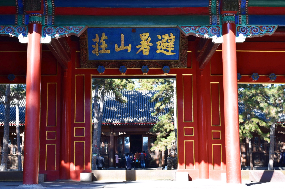
Hebei
Hebei
-
SiChuan
Sichuan, or Sichuan for short, is one of China's 23 provinces, the capital of Chengdu. It is located in the interior of Southwest China, between 26 ° 03 ′ - 34 ° 19 ′, 97 ° 21 ′ - 108 ° 12 ′ e, Chongq
Views: 1055 Time 2019-12-14 -
Hebei
Hebei Province, referred to as "Ji", is the provincial administrative region of the people's Republic of China, the capital of Shijiazhuang. It is located in North China, between 36 ° 05 ′
Views: 434 Time 2019-12-15 -
Heilongjiang
Heilongjiang Province, referred to as "black", the provincial capital Harbin It is the most northernmost and most Eastern provincial administrative area in China, with a total area of 473 th
Views: 494 Time 2019-12-16 -
Zhejiang
Zhejiang, referred to as "Zhejiang", is the provincial administrative region of the people's Republic of China. Hangzhou, the capital of the province, is located in the southeast coast of Ch
Views: 433 Time 2019-12-16 -
Shandong
Shandong Province, a coastal province in East China, is referred to as Shandong, the capital of Jinan. It is located between 34 ° 22.9 ′ - 38 ° 24.01 ′ N and 114 ° 47.5 ′ - 122 ° 42.3 ′ E in the easte
Views: 540 Time 2019-12-16 -
Henan
Henan Province, referred to as "Henan", the provincial administrative region of the people's Republic of China. Zhengzhou, the capital of Henan Province, is located in the central part of Ch
Views: 1417 Time 2019-12-16 -
Guangdong
Guangdong, referred to as "Guangdong", is the provincial administrative region of the people's Republic of China and the capital of Guangzhou. Because the ancient place name is widely believ
Views: 216 Time 2019-12-16 -
GuangXi
Guangxi Zhuang Autonomous Region, referred to as "Gui", is a provincial administrative region of the people's Republic of China, located in South China. Guangxi borders between 20 ° 54 ′ - 2
Views: 227 Time 2019-12-16 -
Hainan
Hainan Province, one of China's 23 provinces, is located in the southernmost part of China, referred to as Qiong, the capital of Haikou. Hainan Province is China's special economic zone and pilot free
Views: 239 Time 2019-12-16 -
Guizhou
Guizhou, referred to as "Guizhou" or "Gui", is the provincial administrative region of the people's Republic of China. Guiyang, the provincial capital, is located in the hinterland
Views: 203 Time 2019-12-16 -
Yunnan
Yunnan Province, or Yunnan for short, is one of the 23 provinces in China. It is located in the southwest and the capital of Kunming. It is bounded between 21 ° 8 ′ - 29 ° 15 ′ N and 97 ° 31 ′ - 106 °
Views: 324 Time 2019-12-16 -
Ningxia
Ningxia Hui Autonomous Region, referred to as Ning, is the capital of Yinchuan. It is located in the inland area of Northwest China, adjacent to Shaanxi in the East, Inner Mongolia in the West and North, Gansu in the South and Ningxia Hui Autonomous Regio
Views: 369 Time 2019-12-16

